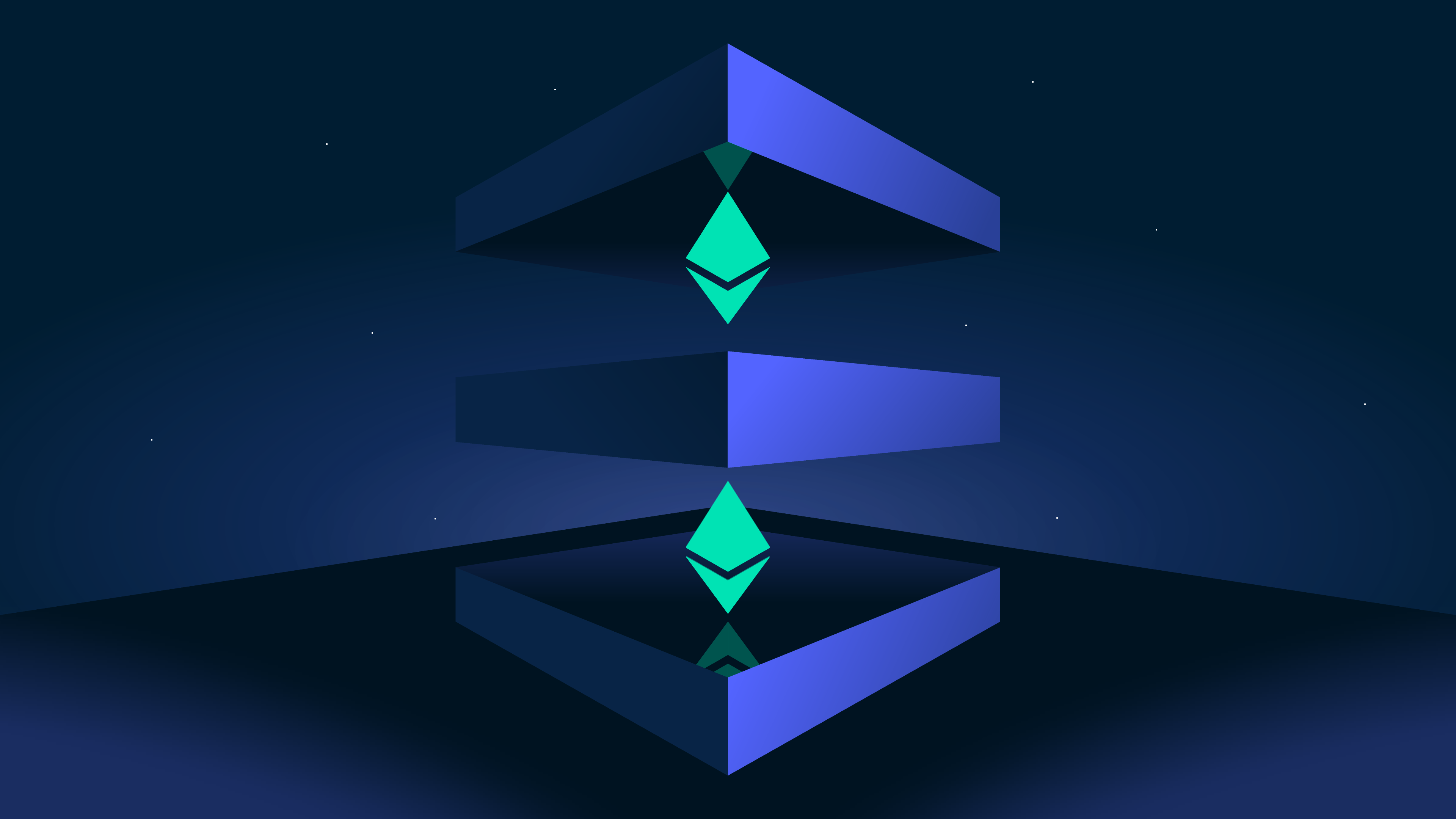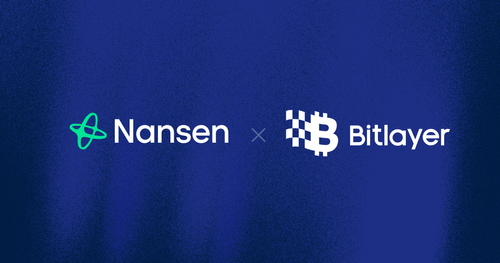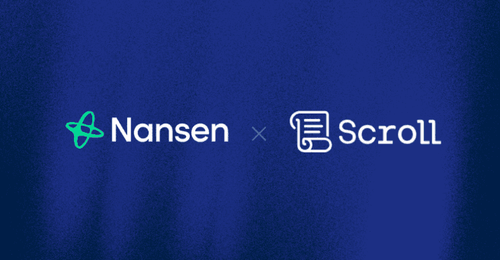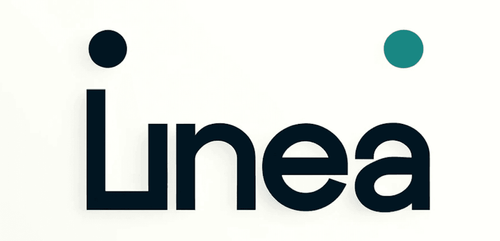Rollups-as-a-Service: An Introduction
The primary aim of Rollups-as-a-Service (RaaS) is to simplify the process for developers to deploy rollups by reducing technical complexities. With the launch of Rollup-SDKs, one-click rollup solutions, and Rollup Sequencer-as-a-Service (RSaaS) solutions, RaaS is becoming increasingly popular, and more solutions are likely to be introduced.
The modular blockchain thesis proposes that a blockchain can be separated into three distinct components: settlement , data availability, and execution. This approach makes it easier for developers to set up a new execution layer by leveraging the existing settlement and/or data availability layers. For instance, developers will be able to outsource their data availability layer to teams like EigenLayer, and Celestia and choose to settle on their own roll-up or the underlying L1.
In the future, we can expect to see a proliferation of application-specific chains, rather than general-purpose chains like Ethereum Mainnet, Fantom, Solana, etc. as projects can leverage existing rollup infrastructure layers. RaaS is designed to address these challenges for developers to build their own application-specific chains.
To recap, there are 5 main types of roll-up designs in the market today:
General Smart Contract Rollup: The L1 itself (Ethereum/ Polygon, etc.) is responsible for settlement, consensus, and data availability. The execution layer (rollup) is separated from the monolithic chain. Some examples include Optimism,Arbitrum, and zkSync.
Sovereign Rollup: Celestia introduced the concept of sovereign rollups. The L1s is responsible for consensus and data availability while the rollup is used for settlement and execution. Similar to settlement rollup, sovereign rollup can be divided into an application-specific sovereign rollup and general-purpose sovereign rollup. An example of a sovereign rollup is a rollup that is constructed from the Celestia Rollkit model. Learn more about Sovereign Rollups here.
Settlement Rollup: Settlement rollups rely on smart contracts on the settlement layer itself to verify proofs and bridge assets. This smart contract acts as the single source of truth for the rollup chain. For instance, the RollApp in Dymension Hub and Chainlet in Saga Chain.
Enshrined Rollup: An enshrined rollup is built inside the L1 itself. On Ethereum, the execution client builds blocks containing the block header and body. If this block is wrapped as a rollup block with proofs (validity/fraud), then there is no need for other validators to recompute all the transactions. Instead, they only need to compute the state difference and verify the proof. Teams like Dymension are building on this front.
Base Rollups: Base rollup utilizes the L1 node as the sequencer. The L1 sequencer allows for Base rollups to inherit the underlying L1’s liveness and decentralization, reducing the risk of toxic MEV from centralized or short-term sequencers.
Opportunities and Challenges for RaaS Technology
The breakthrough of RaaS lies in its ability to enable developers to launch any type of execution layer that best fits their needs. A RaaS system should possess the following features and unlock new use cases for developers:
- Develop application-specific chains and execution layers tailored to specific use cases.
- Provide the option for interchangeable data availability (DA) and settlement layers, making it chain agnostic.
- Allow for customizability, as execution layers can fully cater to the needs of the developers.
- Cost-effectiveness as the only cost should be to provide economic security in the form of relevant tokens, while the cost of running an execution layer should be free or as low as possible.
Challenges and Limitations
The current state of RaaS technology is still largely Optimistic Rollup-based. While Optimistic Rollups have well-established and battle-tested codebases and support for EVM, their fraud-proof technology still lags behind ZK-Rollups in terms of finality and security. The challenge period required for finality makes it difficult for applications that demand quick finality periods to operate on the existing infrastructure, let alone deploy on a RaaS. ZKR can quickly generate and distribute ZK proofs in the p2p layer for all light clients to see, providing faster finality as these proofs can be batched and posted to the L1 subsequently. Sovereign Labs is focusing on ZKR technology to ensure that ZK proofs can be posted on-chain and verified later on, so light clients can process and sync them in real-time.
In terms of performance, rollups still require batching transactions to the underlying L1, limiting the TPS of the rollup to the storage capacity of the L1. Despite its current limitations, Ethereum has a line-up of scaling solutions that will come to fruition with EIP-4488. There are also projects like Celestia and Polygon Avail working to increase the storage capacity for L2s directly.
Despite the benefits of RaaS, current rollup designs are still centralized in nature, presenting a critical vulnerability. Arbitrum has experienced periods of downtime, but many projects are actively working towards decentralizing rollups or making them sufficiently decentralized over time.
RaaS enables developers to build application-specific execution layers, but the challenge remains in creating a highly usable and functional application. So far, there has not been much innovation leveraging the RaaS stack, but it is still early days.
RaaS Landscape
With the existing RaaS projects out there, two of the main types of RaaS are divided into two distinct categories: SDK and No-Code solutions. The SDK solution provides developers with a set of general software development kits, making the process of deploying rollups as seamless as deploying general smart contracts. The no-code solution is a plug-and-play model.
Among the solutions that are available, the OP Stack and Rollkit are two of the most used SDK solutions, alongside Dymension, Sovereign Labs, and Stackr. Some of the projects building the no-code solution include Altlayer, Caldera, Eclipse, Saga, etc.
Rollup-SDK
OP Stack
The OP Stack is a rollup-SDK solution built by the Optimism team, with a modular blockchain architecture in mind. The team proposed what they believe to be the final form of blockchain’s “super-chain” thesis. The Superchain leverages OP Stack’s modular architecture and single shared sequencer set, which will enable atomic cross-chain composability between chains and ultimately trustless rollup maintenance.
Coinbase recently did a testnet launch for their L2 Blockchain Base, which is built using the OP stack. Coinbase mentioned that Base will not be limited to Ethereum, but will also provide easy access to other L2 networks like Optimism. The OP Stack is by far one of the most mature Rollup-SDK in terms of adoption.
Using the OP Stack can guarantee that developers will receive strong network effects as the OP Stack is well-established amongst many developers and ecosystems. OP Stack can be considered a battle-tested Rollup-SDK solution whileno-code Rollupas-as-a-Service, as they tend to be newly implemented. The OP Stack is looking to build a Superchain of shared sequencers where the end-game would be atomicity between rollups.
Rollkit
Rollkit (previously known as Rollmint) provides a modular node for running rollups on top of DA layers. Rollkit rollups inherit the security from its DA layer, eliminating the process of developers bootstrapping their own validators. Rollkit for rollup chains can be thought of as similar to what Tendermint is for L1 chains - rollups will leverage an underlying consensus layer.
Rollkit is an independent project from Celestia and serves as a community-led public good to help developers thrive in the modular architecture setup.
Dymension’s RDK
Dymension is building an enshrined rollup ecosystem. RollApps are their own blockchains built with Dymension’s RollApp Development Kit (RDK), which is inspired by the Cosmos SDK concept. The team is betting on the second-order network effect where developers build their own RollApp chain, without the overhead of creating consensus and assembling a validator set, while inheriting the security from the Dymension Hub.
In Dymension’s RDK, the value accrual is given to the L1, which is the Dymension Hub. Furthermore, there is no need for re-execution, resulting in a lighter history load and a faster node syncing process. The absence of a bridge contract on the settlement layer leads to lower latency and faster finality.
The biggest drawback with enshrined rollup's SDK is its limited flexibility and lack of sovereignty. The basic logic of block production, proof verification, and rollup types are "enshrined" in the settlement layer and cannot be easily modified compared to sovereign SDKs.
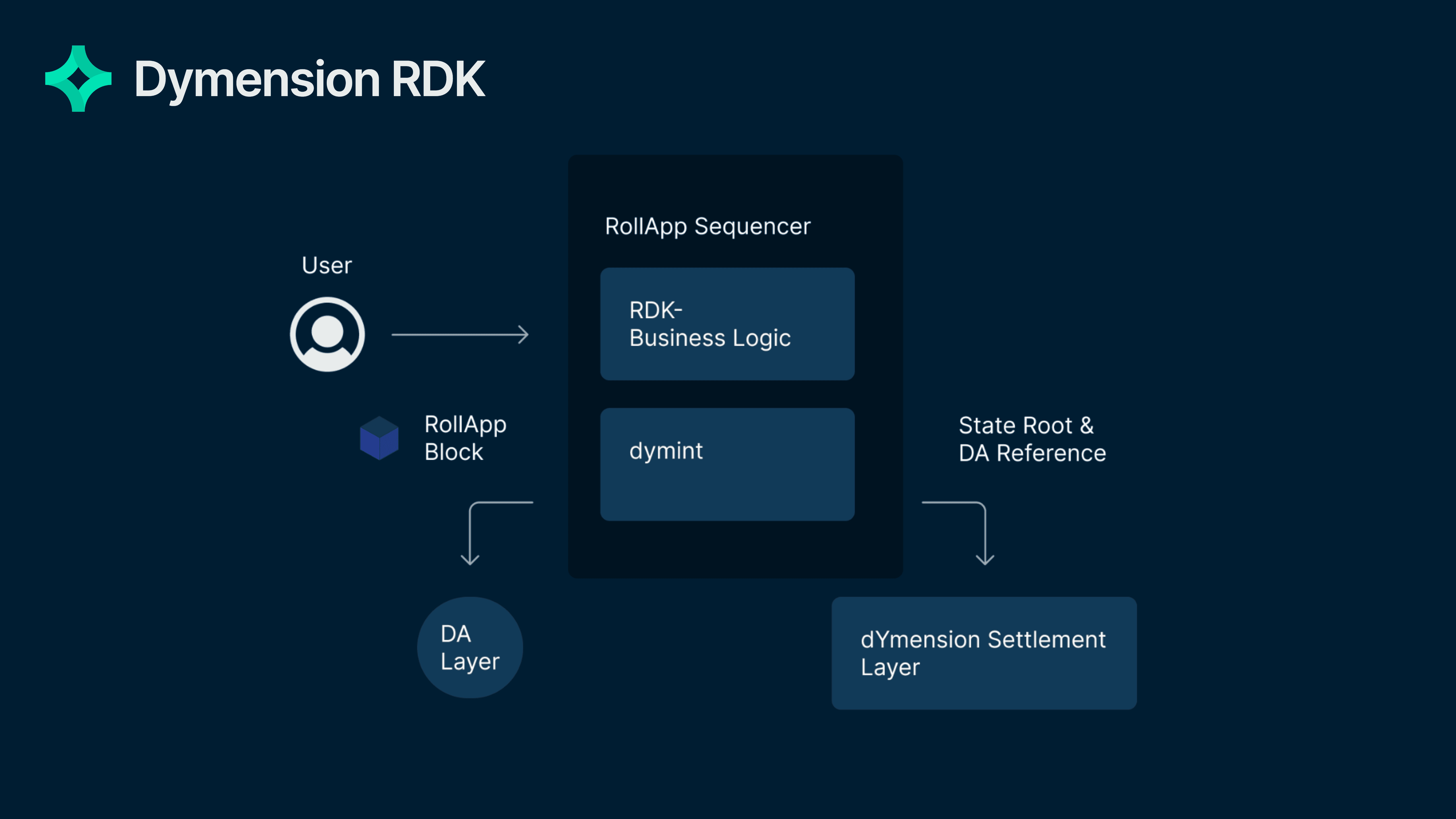
- Execution layer: RollApps
- Settlement & Consensus: Dymension Hub
- Data Availability: DA providers
Other notable Rollup-SDKs:
Stackr SDK
Stackr is introducing the concept of micro-rollups. Developers can leverage the Stackr SDK to define data structures for their application’s state and transition functions. Stackr will do all the back-end technical steps and finalize it on the L1. What this enables is a composable micro-rollup ecosystem using a shared aggregator network.
Sovereign Labs SDK
Sovereign Labs is building the first rollup framework to abstract away the details of zero-knowledge. It will provide the infrastructure necessary for blockchains to be built (i.e. A P2P network, a database, an RPC node), and developers can focus on the business logic of their chain. Other than this base, Sovereign Labs will also provide developers with modules to operate in a zero-knowledge environment.
No-Code Deployment
Caldera
Caldera recently raised a $9m funding round, led by Sequoia Capital and Dragonfly, with participation from NEO Foundation, 1kx, and Ethereal Ventures.
The Caldera modular stack is broken down into 3 parts:
- Execution Layer: Caldera Chains are EVM-compatible; Caldera’s execution layer is based on a fraud-proof Optimistic Rollup model. The security of the Caldera Chain is maintained by running a fraud-proof mechanism.
- Settlement Layer: All EVM-compatible chains.
- Data Availability Layer: Data can be posted on the EVM-compatible settlement layer or DA providers like Eigenlayer or Celestia.
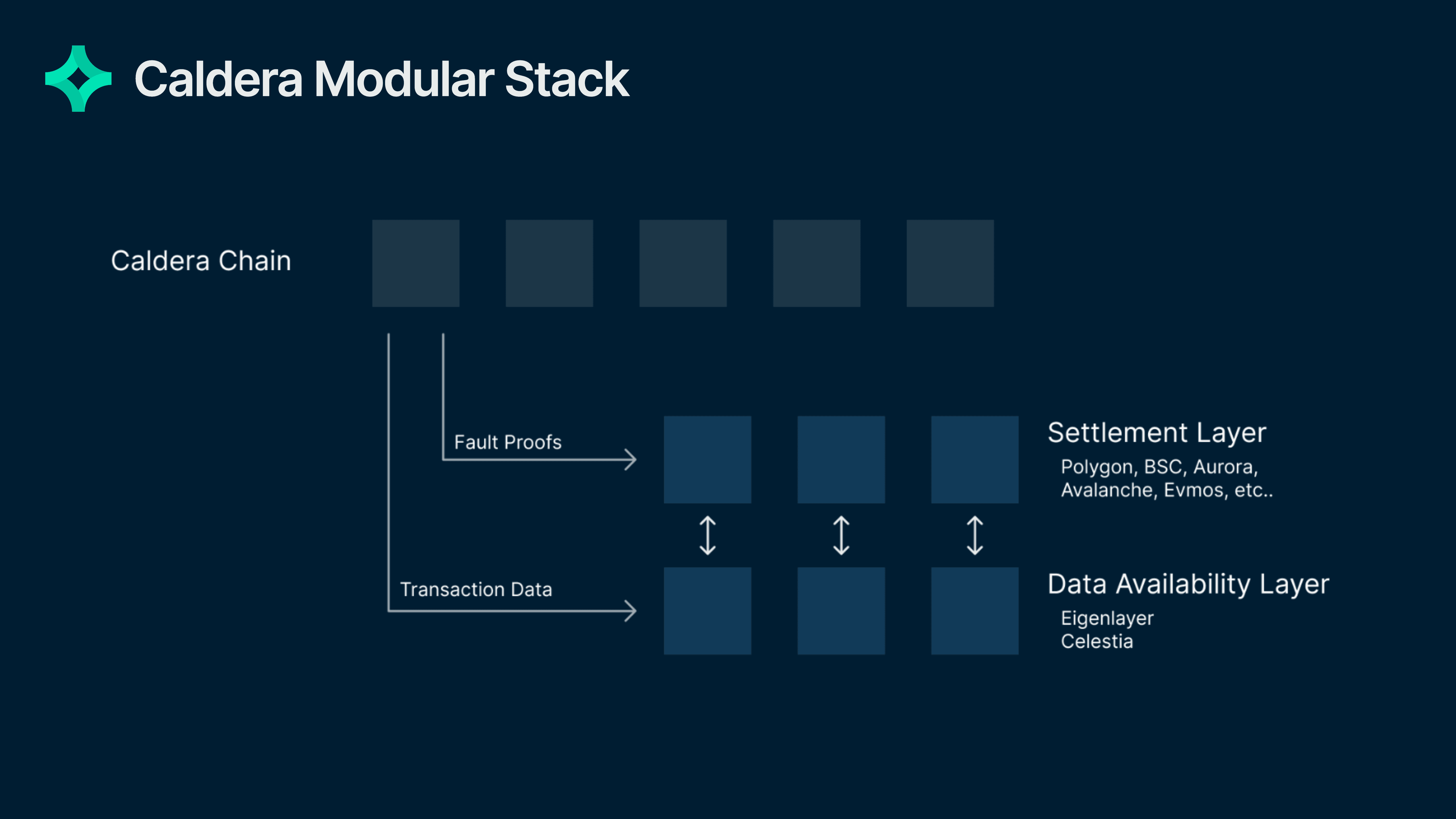
AltLayer
Altlayer is a no-code rollup solution with a focus on solving network congestion in L1s. In traditional monolithic blockchain setups, dApps deployed on the same blockchain network share limited block space. When transactions on the network start to surge, the entire network will be congested and gas costs will soar as a result.
AltLayer introduces the concept of disposable execution layers, also known as Flashlayers. With Flashlayers, developers have the ability to change the rollup functionality according to the demands of their application. During times of network congestion, developers can quickly launch a new rollup as needed. Once the network stabilizes, they can dispose of the rollup by conducting an "end-of-life" settlement on the L1, only using the rollup during periods of high network activity. The AltLayer team demonstrated the effectiveness of their Flashlayer mechanism during a 2-day Dark Forest community round, a popular fully on-chain game, hosted on one of their flash layers. The game received over 180k+ daily transactions, which represents more than 90% of daily transactions on Optimism.
- Execution Layer: AltLayer allows builders to launch their own rollup using the EVM.
- Settlement Layer: EVM-Compatible Chains, namely: Ethereum, Polygon, or BNB. The team already confirmed that they will be adding other EVM and non-EVM settlement options in the future like Solana.
- Data Availability Layer: Data can be posted on the EVM-compatible settlement layer or DA providers like EigenLayer or Celestia.
Eclipse
Eclipse is a sovereign roll-up built on Celestia and powered by the Solana Virtual Machine (Sealevel). The Eclipse execution layer is derived from Solana's and includes features such as the Solana virtual machine and parallel processing of transactions (Sealevel). Currently, Eclipse is operating as an Optimistic Rollup, but the team is working to incorporate Zero-Knowledge Rollups through their partnership with RISC-Zero.
The team recently joined forces with Catalyst AMM, a cross-chain liquidity protocol, to utilize their liquidity layer and connect Eclipse rollups with other ecosystems. Developers have the ability to create their own blockchain-as-a-service and link it to any other chain using Catalyst's liquidity layer and Eclipse's customizable rollups.
- Execution Layer: Developers can choose their own VM (SVM/EVM as of today).
- Settlement Layer: Eclipse serves as its own settlement layer, meaning every Rollup that deploys on top of Eclipse ultimately settles on that chain.
- Data Availability Layer: Developers can choose between existing DA solutions like Celestia, Eigen DA, or Polygon Avail. In the future, Ethereum DA will also be added.
Other Notable No-Code RaaS Projects:
Saga
Saga is an IBC-enabled application-specific rollup. They are focusing on a Rollup-Sequencer-as-a-Service (RSaaS) sequencer set for Rollkit-enabled chains.
With Shared Sequencer Sts, nodes bundle transactions and submit the compressed data to underlying layers. RSaaaS can enable cross-rollup messaging so nodes produce blocks at the same time on the individual chains. Other teams like Expresso Systems are also building on this front.
Target Market for RaaS Projects
Social Algorithms
A great example of decentralized social networks using RaaS technology to leverage their existing technology is Farcaster. Farcaster is building a “sufficiently decentralized social network”, and believes that putting an entire application on-chain is often unnecessary and “undesirable”. According to the team, the platform enables easy connections between users and provides three key decentralized features: the ability to get a unique username, post messages under that name, and read messages from any valid name. With Faracaster’s approach to “sufficient decentralization”, RaaS projects like Stackr SDK promoting the use of micro-rollups are sufficient to decentralize certain parts of their technology stack.
GameFi
Gaming projects often require an execution environment that is highly customizable with high TPS and low gas. Current L1 solutions allow dApps to inherit its security layer but have limits imposed by the underlying L1 blockchain. On-chain gaming simply cannot exist on current L1s due to their latency. Rollups allow gaming developers to build sophisticated gaming applications whilst leveraging the existing rollup infrastructure.
Other Potential Use Cases:
- Derivatives Trading
- Machine Learning
- AMM Dexs
- Databases and cloud services
- Etc.
What’s Next: The Modular Blockchain Stack and Its Future
With the proliferation of new application-specific chains that will be enabled through RaaS and Rollup-SDKs, interoperability will be a key infrastructure piece. The biggest challenge with the current setup of application-specific chains is the fragmentation of liquidity and UX. Composability is often lost when moving away from a shared state machine towards a modular blockchain architecture.
Currently, teams like Hyperlane are building an interoperability stack that seeks to make it seamless for anyone to connect these blockchains in an aggregated interface. Hyperlane is betting on an interoperable future in a single, unified interface where developers can customize their security modules, bridge assets, validators, and relayers, and which chains they want to connect with. Besides Hyperlane’s current partnership with Celestia, they are working with RaaS providers like Caldera and Eclipse to extend their interoperable stack and allow more modular rollups to connect with the wider ecosystem. The end game for Hyperlane is to streamline interoperability, providing a unified interface for inter-chain communication.
Similarly, Vitalik proposes a future blockchain architecture with multiple Rollups and cross-chain bridges among them. Ideally, the blockchain should provide a native cross-rollup bridge maintained by its validators for security purposes. Furthermore, a bridge should support synchronous message calls from one rollup to another. This will be the ideal scenario for better composability in a rollup-centric environment.
Furthermore, teams like Catalyst AMM are exploring the question of cross-chain liquidity for rollups. They are partnering with RaaS projects like Eclipse to leverage Catalyst’s liquidity layer and enable fast-finality liquidity and token swaps between rollups.
The current modular architecture is quickly evolving, and developers now have more flexibility in choosing an execution and data stack, as well as their preferred settlement according to specific use cases and needs. The end game would be a unified interface to connect all the moving pieces together. In terms of dApps and how RaaS can enhance developers’ experience, more dApps should be able to easily go multichain and access IBC, reducing congestion and enabling application-specific chains to gain sovereignty, custom sequencer logic (i.e: block times, returning MEV to dApps, etc.).

